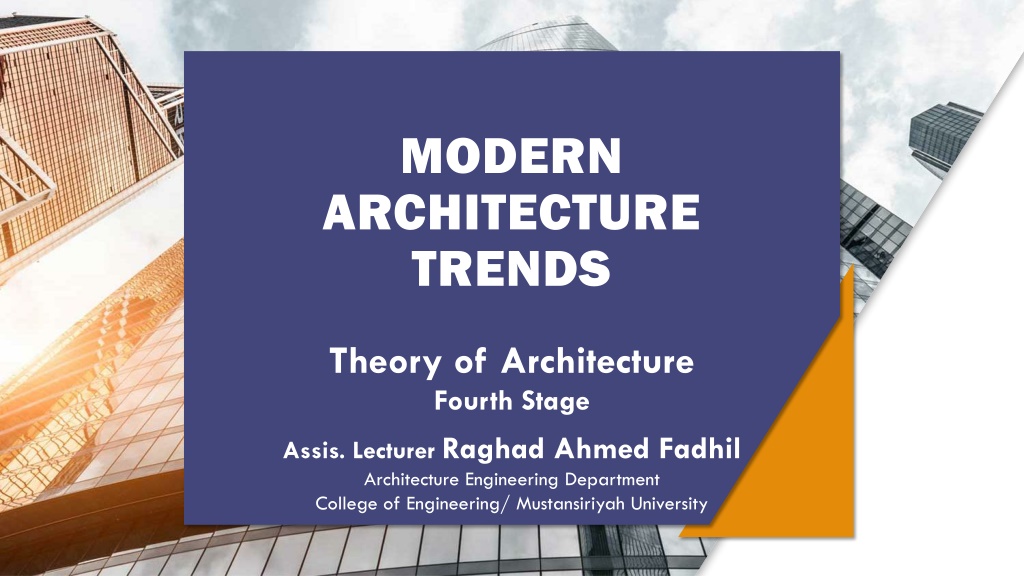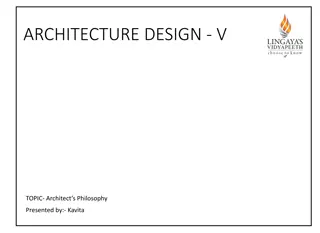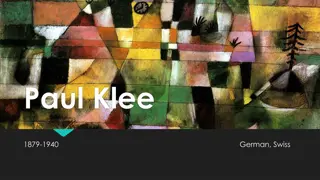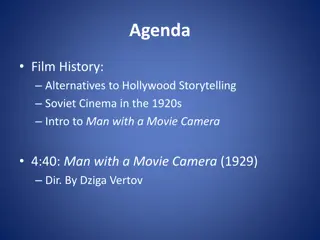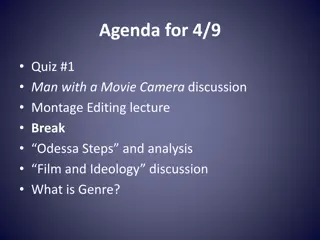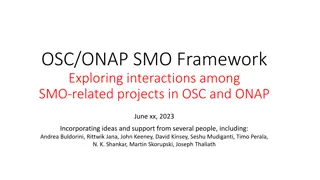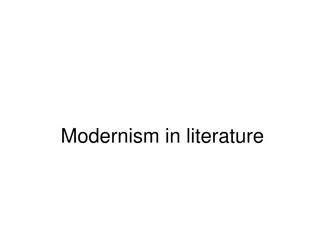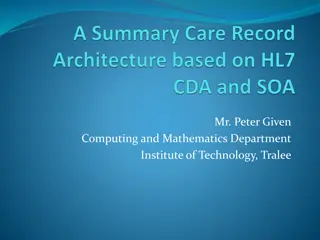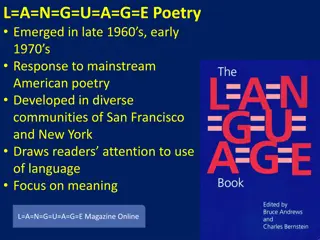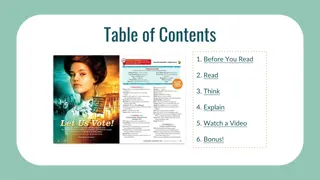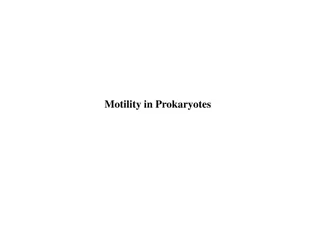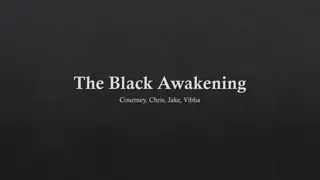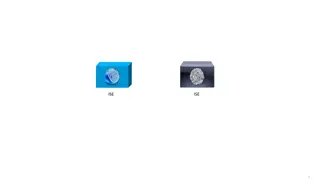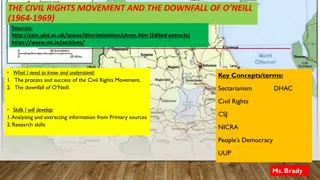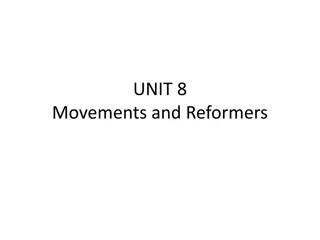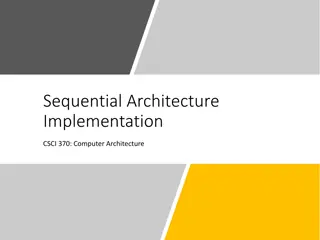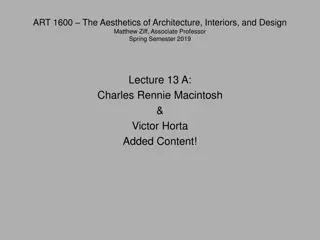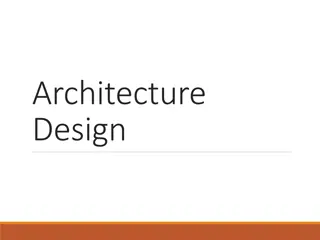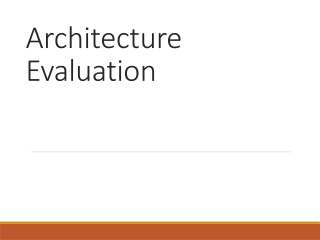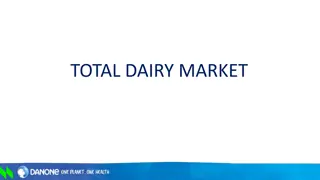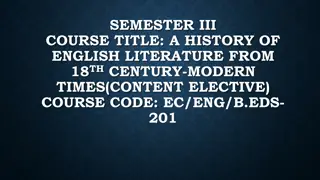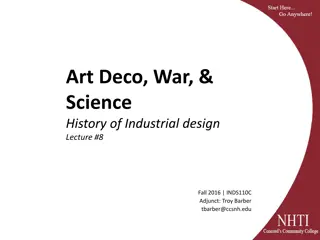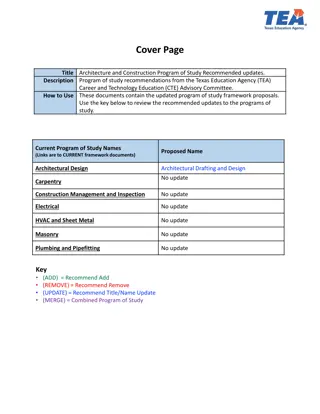Exploring Modern Architecture Trends: Expressionism and Bauhaus Movement
Delve into the world of modern architecture trends, focusing on Expressionist architecture in Europe during the early 20th century and the influential Bauhaus movement in Germany. Expressionist architecture emphasized emotional effects through distorted forms inspired by nature, while the Bauhaus school revolutionized design by combining crafts and fine arts, leading to a groundbreaking approach to architecture and art education. Discover the innovative characteristics and iconic structures of these architectural movements that have left a lasting impact on the field.
Download Presentation

Please find below an Image/Link to download the presentation.
The content on the website is provided AS IS for your information and personal use only. It may not be sold, licensed, or shared on other websites without obtaining consent from the author. Download presentation by click this link. If you encounter any issues during the download, it is possible that the publisher has removed the file from their server.
E N D
Presentation Transcript
MODERN ARCHITECTURE TRENDS Theory of Architecture Fourth Stage Assis. Lecturer Raghad Ahmed Fadhil Architecture Engineering Department College of Engineering/ Mustansiriyah University
MODERN ARCHITECTURE TRENDS EXPRESSIONIST ARCHITECTURE Circumastances Expressionist architecture is an architectural movement in Europe during the first decades of the 20th century in parallel with the expressionist visual and performing arts that especially developed and dominated in Germany. The style was characterized by an early-modernist adoption of novel materials, formal innovation, and very unusual massing, sometimes inspired by natural biomorphic forms, sometimes by the new technical possibilities offered by the mass production of brick, steel and especially glass. 2
MODERN ARCHITECTURE TRENDS Chilehaus, Germany, Fritz H ger, 1922 - 1924 EXPRESSIONIST ARCHITECTURE Characteristics Distortion of form for an emotional effect. An effort to achieve the new, original, and visionary. Themes of nature, such as caves, mountains, lightning, crystal and rock formations. It is more mineral and elemental than organic character of art nouveau. Uses creative potential of artisan craftsmanship. Conception of architecture as a work of art. The Einstein Tower, Erich Mendelsohn, 3 1919 -1921, Germany.
MODERN ARCHITECTURE TRENDS BAUHAUS Circumstances Bauhaus, was a German art school operational from 1919 to 1933 that combined crafts and the fine arts. The Bauhaus was founded by Walter Gropius in Weimar. The German term Bauhaus literally "building house" was understood as meaning "School of Building . It was under the direction of Walter Gropius, Hannes Meyer, and Ludwig Mies van der Rohe. It is inspired from Arts and Crafts movement, but machine production had to be the precondition of design to have an impact in the 20th century It was founded with the idea of creating a "total" work of art in which all arts, including architecture, would eventually be brought together.(art, architecture, graphic design, interior design, industrial design, and typography) The Bauhaus style later became one of the most influential currents in Modernist architecture and art, design and architectural education. 4
MODERN ARCHITECTURE TRENDS BAUHAUS Characteristics Gropius designed the various sections of the building differently, separating them consistently according to function. He positioned the wings asymmetrically; the form of the complex has no central view. The interior fittings were made in the Bauhaus workshops. The main elements of the complex are: 1. the glass-fronted, three-storey workshop wing, 2.the three-storey building for the vocational school 3. the five-storey studio building. 4. The workshop wing and the vocational school are connected by a two- storey bridge which was used for administration purposes. 5. The workshop wing and the studio building are connected by a one-storey building (festive area) comprising auditorium, stage and canteen. Walter Gropius, Dessau, Germany 5
MODERN ARCHITECTURE TRENDS FUNCTIONALISM ARCHITECTURE Adolf Loos Adolf Loos is best-known for his 1908 essay "Ornament & Crime." This and other essays by Loos describe the suppression of decoration as necessary for modern culture to exist and evolve beyond past cultures. Ornamentation, even "body art" like tattoos, is best left for primitive people, like the natives of Papua. "The modern man who tattoos himself is either a criminal or a degenerate . " Ornament does not heighten my joy in life or the joy in life of any cultivated person. If I want to eat a piece of gingerbread I choose one that is quite smooth and not a piece representing a heart or a baby or a rider, which is covered all over with ornaments. The man of the fifteenth century won't understand me. But all modern people will. " Freedom from ornament is a sign of spiritual strength." 6
MODERN ARCHITECTURE TRENDS FUNCTIONALISM ARCHITECTURE Characteristics functionalism is the principle that architects should design a building based on the purpose of that building. the form of a building should be determined by practical considerations such as use, material, and structure, as distinct from the attitude that plan and structure must conform to a preconceived picture in the designer s mind. "there should be no features about a building which are not necessary for convenience, propriety" and "all ornament should consist of enrichment of the essential construction of the building". A building should satisfy functional parameters, as creating work flows, visitor flows, supply flow, waste flow, etc. The same building should provide proper environment, with fresh clean air, proper humidity, proper temperature, etc. construction, or Villa M ller Prague, Czech Republic 1930 Adolf Loos 7
MODERN ARCHITECTURE TRENDS Expressionist Architecture Prairie School Constructivist architecture Bahaus Chicago School De Stijl Functionlalism 8
